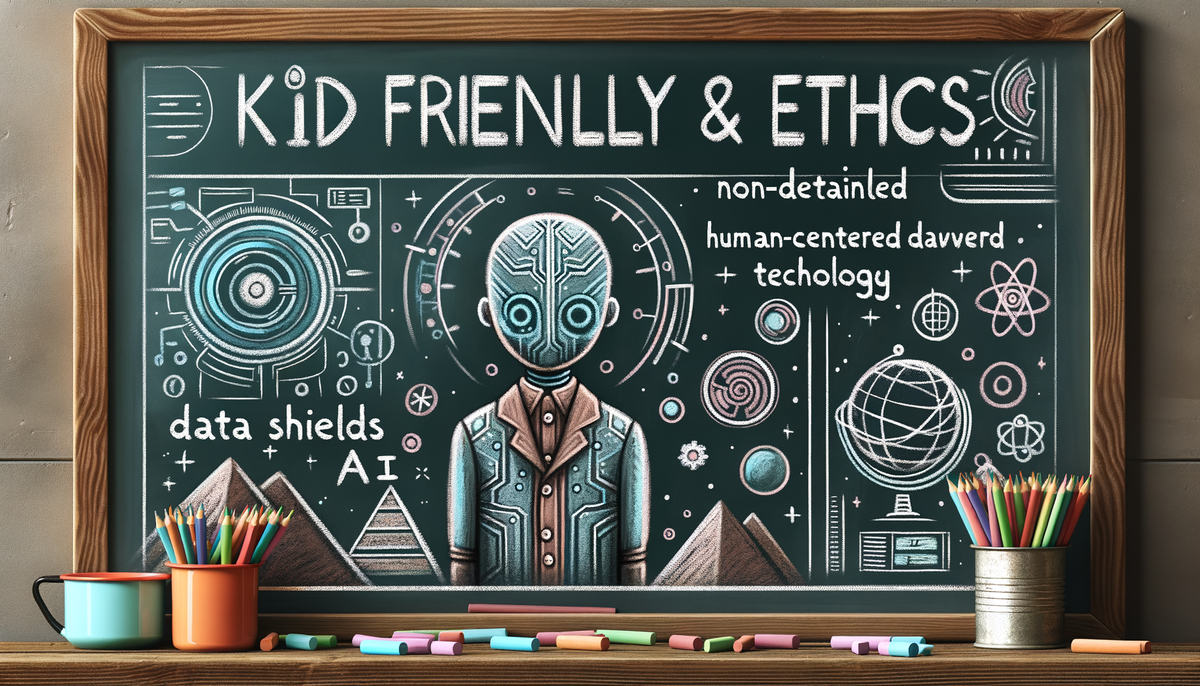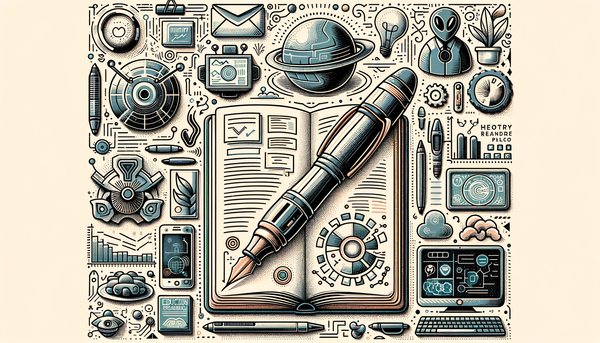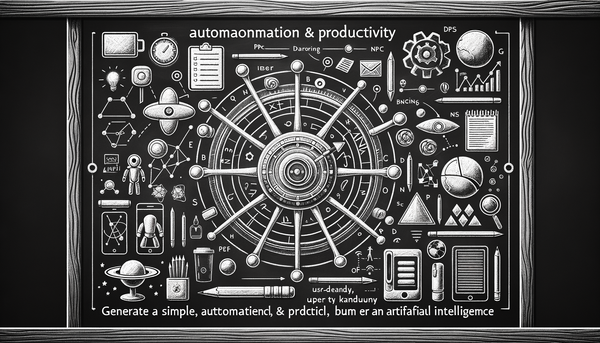AI Impact Roundup: Evolving Insights on Society and Technology

This article explores the transformative landscape of artificial intelligence by examining innovative advancements in data storage optimization, the imperative to break free from cyclic thinking, the ethical debates surrounding AI in life-critical decisions, dynamic global collaborations showcased at international summits, and emerging challengers advocating for diversity in AI approaches. Through an in-depth analysis of recent developments—from VDURA’s integrative storage solutions to DeepSeek’s disruptive Deep Neural Network—and a reflective look at the repeated cycles in AI evolution, we uncover how these innovations reshape not only technology but also our societal and ethical frameworks.
Optimizing Data Management for AI Growth: VDURA's Integrated Approach
One of the most practical challenges facing the AI community has been the efficient management and retrieval of vast amounts of data. In systems where training and inference hinge on large-scale inputs, a nuanced understanding of how data is stored—whether as files or objects—is critical to overall performance. VDURA has introduced a compelling solution: a unified approach that balances file and object storage, ultimately streamlining AI workflows while also enhancing speed and efficiency.
Traditional storage strategies often segregate files and objects into two distinct classes based on historical technology design. However, the inherent limitations of this dichotomy have become increasingly apparent as AI models demand real-time processing and high throughput. VDURA’s strategy hinges on a single storage system that leverages both file and object paradigms under one roof, thereby reducing latency and simplifying data management. This approach, which incorporates intelligent software algorithms for automated data placement, reminds me of the way nature often blurs boundaries between what we once considered strictly defined categories. As Sebastian Thrun once insightfully noted,
"Nobody phrases it this way, but I think that artificial intelligence is almost a humanities discipline. It's really an attempt to understand human intelligence and human cognition."— Sebastian Thrun, What We Are Becoming
By intelligently deciding whether a piece of data is best stored on a high-performance solid-state drive or a capacity-driven hard disk, VDURA’s optimization not only enhances performance but also reduces operational costs. Consider the implications for industries like healthcare and finance, where rapid data retrieval can directly impact outcomes. The solution is particularly modern in its implementation of data deduplication and compression techniques—methods that ensure no redundant data hogs precious storage space while simultaneously accelerating access times.
The integration of file and object storage is a paradigmatic shift that echoes historical transitions in data processing. Just as the industrial revolution redefined manufacturing, VDURA’s approach is poised to redefine data storage, making AI more agile and more accessible. This shift is not just a technical upgrade; it is an evolution that underpins the very fabric of next-generation AI systems.
Breaking the Cycle of Repetition: Innovating Beyond the Past
There’s a recurring theme in technological evolution—a tendency to recycle previous ideas until incremental improvements gradually usher in genuine innovation. John Erickson, the Chief Architect of Artificial Intelligence at RBC, has observed that modern AI can sometimes end up “repeating history.” His critique is not just about the lack of novelty, but a timely reminder that innovation must continuously strive for breakthroughs rather than leaning on the legacy of past successes.
Erickson’s perspective is germane in today’s context where many AI algorithms, especially those in deep learning, often build upon similar architectures and training methods developed years ago. When resources focus excessively on tweaking established methods, the potential for radical innovation diminishes. This concept can be directly compared to the idea of musical remixes that, while engaging for a time, eventually become monotonous if not injected with fresh creativity. Erickson’s clarion call is to push the boundaries—develop new architectures, explore alternative training paradigms, and harness the full spectrum of AI’s possibilities.
In practical terms, this means encouraging research that eschews conventional approaches in favor of novel strategies. It also involves a willingness to question old assumptions and accept that the future of AI lies in uncharted territories. The conversation here is reminiscent of an echo down the corridors of history, where thinkers have warned against complacency. The modern quest is to maintain a delicate balance between leveraging known techniques and venturing into innovative, sometimes risky, new areas of research.
This tension between tradition and innovation is not just a theoretical debate—it is one that significantly affects research funding, academic curricula, and industry investments. Organizations that wish to lead in this new technological era must be predisposed to experiment and learn from unexpected outcomes. At a moment when the industry is awakening to the need for sustainable and ethical AI development, the shift from repetition to originality is increasingly seen as indispensable.
AI in End-of-Life Medical Decisions: Balancing Data and Humanity
The application of artificial intelligence in ethically sensitive areas, such as end-of-life medical decisions, poses one of the most profound challenges of our time. Recently, debates have flourished over whether AI can or should assist in these deeply human moments filled with nuanced emotions and moral dilemmas. On one hand, proponents advocate that the impartiality of AI can bring a level of objectivity to the decision-making process. On the other hand, critics argue that the lack of human empathy might reduce these situations to mere algorithmic outcomes.
The discussion, as featured in the Harvard Gazette, centers around the potential benefits of integrating AI into these high-stakes scenarios. The appeal lies in the promise of data-driven insights that might predict patient outcomes with greater accuracy or suggest treatments based on a vast array of clinical data. In contrast, skeptics underscore the importance of preserving human judgment in matters where compassion, empathy, and ethical considerations are paramount.
There are compelling historical analogies here. Consider the evolution of decision-making in medicine—from the era of solely doctor-driven choices to the contemporary integration of diagnostics, specialized tests, and predictive analytics. With AI, we are at a crossroads where technology might amplify the ability to process large datasets, thereby identifying subtle patterns that a human mind might overlook. Yet, the risk remains that such systems could inadvertently marginalize the very human touch that defines medical caregiving.
One of the critical aspects of this debate is transparency and accountability. When algorithms assist in critical decision-making, understanding how they arrive at a particular conclusion becomes essential. It isn’t enough for an AI system to be accurate; its process must also be comprehensible. This is especially true in end-of-life scenarios, where trust and human dignity are on the line.
The discussion prompts us to reflect on another profound idea from Nick Bostrom:
"Machine intelligence is the last invention that humanity will ever need to make."— Nick Bostrom, Superintelligence: Paths, Dangers, Strategies
While Bostrom’s quote speaks to the transformative impact of AI, it also subtly warns of the potential hazards if we are not vigilant about integrating ethical safeguards. Therein lies the challenge—balancing technological prowess with a rigorous commitment to ethical standards in a field where the consequences of decisions are deeply felt on a personal level.
Ultimately, the question is not solely about whether AI should help make these decisions but how it can ensure that human values remain central. Incorporating multidisciplinary perspectives—medical, technical, and ethical—could pave the way for frameworks that allow AI to function as a supportive tool rather than a definitive arbiter.
Global Collaborations and the Role of Governments: Insights from the Paris AI Summit
The international stage has long played host to debates on technologies that shape our future, and the annual Paris AI Summit is a prime example of this dynamic arena. With Indian Prime Minister Narendra Modi co-chairing the summit, the convergence of political leadership, industry experts, and academic researchers signals high expectations. Such gatherings offer more than just networking opportunities—they serve as incubators for ideas and platforms for forging global partnerships that drive technological advancements.
Participants at the summit are expected to deliberate on the latest developments, ranging from ethical AI practices to pioneering innovations that transcend existing technologies. The discussions spearheaded by policymakers and thought leaders are particularly crucial for emerging economies like India, which is rapidly becoming a hub for tech innovation. The summit also spotlights collaborative projects poised to address challenges such as data security, algorithmic bias, and investment in next-generation AI research.
One cannot overstate the importance of governmental involvement in this sphere. When leaders such as PM Modi lead these discussions, there is an inherent signal of commitment at the highest levels to support and guide AI research and development. The role of governments is often seen as twofold: ensuring that technological progress aligns with public interest and proactively addressing the ethical dilemmas that come with rapid innovation.
Historically, international summits have been seminal in shaping the policy environment of emerging technologies. For instance, previous summits dealing with internet governance and cybersecurity have laid the groundwork for collaborative regulatory frameworks. The Paris AI Summit continues this tradition by not only creating a forum for dialogue but also acting as a catalyst for action where diverse stakeholders agree on a set of guiding principles for responsible AI development.
Such events underscore the necessity of global dialogue and cooperation in setting AI’s future course. The summit’s emphasis on ethical AI and public-private partnerships is a reminder that successful technological advancement requires collective input and consensus from all affected stakeholders.
Diversity in AI and Challenging the Monopolistic Narrative: DeepSeek's Revolutionary Approach
There is an emerging narrative in the AI community that often paints the industry as being dominated by a handful of big tech giants. However, DeepSeek, a pioneering tech company, is actively challenging this notion. Their development of a Deep Neural Network (DNN) that integrates both supervised and unsupervised learning represents a bold step toward diversifying the approaches within AI research.
The conventional belief has been that large players like Google, Facebook, and Amazon consolidate innovation by acquiring or inhibiting smaller startups. DeepSeek’s approach, in contrast, demonstrates that there is room for alternative pathways. Their technology is designed to function with a level of autonomy, learning and adapting in ways that free it from the shackles of traditional programming. Such capabilities have substantial ramifications, particularly in industries like finance and healthcare where data-driven decisions are crucial.
For example, the finance sector has witnessed significant improvements in loan decision processes and fraud detection by leveraging advanced neural networks. In the realm of healthcare, the analysis of medical imagery through DNNs can enable earlier and more precise diagnoses, thereby addressing critical challenges faced by practitioners. DeepSeek’s approach is not just about technological advancement—it is about democratizing AI. By leveling the playing field, they highlight the potential for smaller innovators to contribute meaningfully to a field once considered the exclusive domain of large corporations.
This diversification is crucial because it encourages a competitive environment where innovation flourishes. As DeepSeek demonstrates, an AI ecosystem enriched by varied methodologies can lead to breakthroughs that benefit a broader spectrum of society. Addressing concerns about the potential negative impacts of AI on employment and privacy, DeepSeek’s strategy places a strong emphasis on maintaining human involvement in the development and continual improvement of AI systems.
Reflection on this development calls to mind a familiar adage: innovation thrives on diversity. The introduction of non-traditional approaches not only disrupts monopolistic narratives but also paves the way for a future where AI is truly a tool for all, rather than the preserve of a few dominant players.
Synthesis and Future Directions in Artificial Intelligence
When we take a holistic view of the landscape described above, several key themes emerge that are bound to shape the trajectory of artificial intelligence in the near future. First, the optimization of data management—as brought forth by VDURA—demonstrates that the technical backbone of AI must evolve to meet escalating demands for speed, efficiency, and scalability. The melding of file-based and object-based storage underscores the importance of bridging technical divides to facilitate smoother AI operations.
Second, we must confront the cyclic nature of innovation. The commentary by RBC’s John Erickson serves as a wake-up call; it reminds us that resting on past laurels can lead to stagnation. Breakthrough innovations require a willingness to depart from familiar ground and explore untested ideas, a journey that is as challenging as it is transformative. The call to innovate is clear: to truly harness AI’s potential, we must recalibrate our focus toward cutting-edge research that dares to break from traditional patterns.
Third, the ethical and practical dimensions of applying AI to critical, emotionally charged domains, such as end-of-life decision-making, require a measured and human-centric approach. While AI’s ability to analyze data objectively is unrivaled, it is imperative to remember that not every facet of human experience can—or should—be quantified. The debate here is emblematic of the broader tension between technological progress and the preservation of the human spirit. Responsible AI must not only be efficient and innovative but also empathetic and transparent.
Fourth, the role of global collaboration, prominently featured at the Paris AI Summit, highlights that technological progress is a collective endeavor. When governments and industries converge at international forums, they set the stage for driving ethical guidelines and shared investment in innovation. The summit reinforces the idea that a multi-stakeholder approach is essential, ensuring that progress in AI is both sustainable and aligned with societal values.
Finally, the emergence of DeepSeek as a challenger to the traditional powerhouses of AI paints a hopeful picture for the future. A competitive ecosystem that nurtures diversity in research methodologies is less vulnerable to the pitfalls of monopolistic control. It offers a bright prospect where smaller innovators can introduce novel solutions, fostering a dynamic environment that benefits industries ranging from finance to healthcare.
Looking ahead, we stand on the brink of a new era in AI development. Technical innovations, ethical debates, and global collaborations will together determine the direction and impact of artificial intelligence on our lives. With each advancement—from data storage optimization to innovative neural network architectures—we move closer to realizing an AI ecosystem that fully leverages technology for societal good.
This exploration reminds me of an old proverb: "A river cuts through rock not because of its power, but its persistence." In many ways, the evolution of AI mirrors this notion. It is not merely the strength of individual breakthroughs that shapes our future, but the sustained effort to refine, question, and innovate that will continue to drive progress.
In summary, the journey of artificial intelligence is multifaceted. Every advancement brings with it both opportunities and challenges. As we continue to refine data handling techniques, break away from repetitive methods, integrate AI into ethically complex arenas, foster international cooperation, and enable diversity in research, we collectively push the boundaries of what is possible in this exciting field.
Further Readings
For those interested in exploring related topics and perspectives from the AI.Biz community, you might find these articles insightful:
- AI News Update: Impacts, Innovations, and Future Directions
- AI News Podcast: Impact on Industries and Global Developments
- Latest Developments in AI, Innovations, Investments, and Implications
- AI News Podcast Highlights
For further external insights, consider exploring additional perspectives on AI's ethical implications or innovations in data storage and neural network development from reputable sources online.



